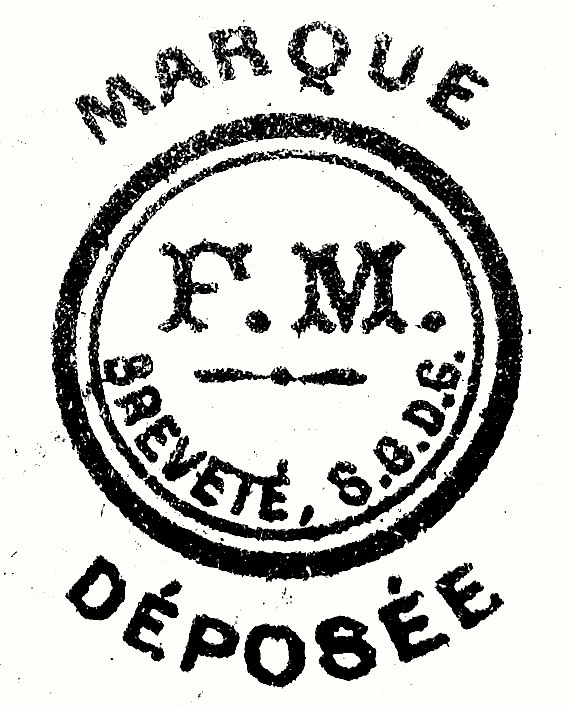From the Pousse-Pousse Annamite from 1889, (for the production number see the Note below) we only knew one model in various colors so far.
The model we know from 1889 has a flywheel drive.
This Pousse-Pousse Annamite was specially made for the 1889 World Exhibition in Paris together with two other toys, Fernand Martin also mentioned this on his gift list in 1908.
I bought one at a French auction house, it was one with a clockwork and with a Martin type key and that was a reason to take a closer look.
I quickly found some notable detail differences.
Note: So far we don’t find a production number yet, in the existing books it was givven number 28 but in an earlier blog I explained that this is not the correct production number, the number 28 was assigned to the toy by the writers.

What to know:
Martin donated a almost compleet toy collection in 1908 to the Musée des arts et Métiers in Paris and to his best friend Henri d’Allemagne.
I don’t know how many were actually made, but I haven’t come across any others yet.
For additional information about the collection at the Musée des arts et Métiers in Paris, see the description on page 74 in the book “Fernand Martin Toymaker in Paris”
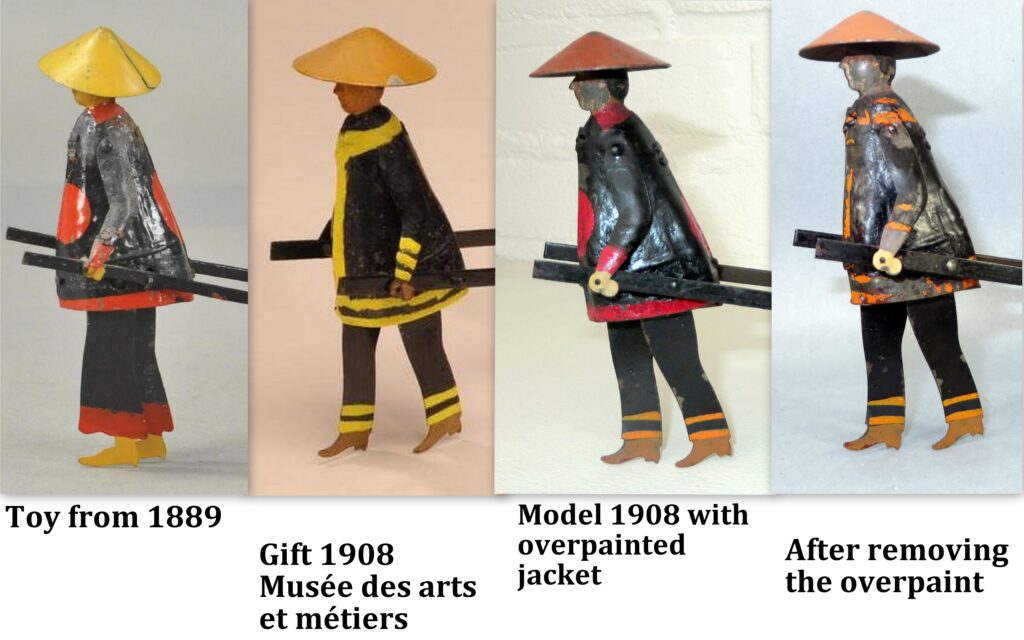
The model from 1908 gift to the Musée des arts et Métiers museum is in near mint condition and is better preserved.
Over the years, the colors and especially the yellow stripes and the hat from the overpainted model 1908 has changed to orange, probably due to the effects of time, the poor storage conditions, the overpaint black color and taking the photo with different lighting.
The differences I found:
The first version from 1889, the movement was with a flywheel, the 1908 version had a clockwork with a Martin type of key.
The wheels were first cast with 8 spokes, in the 1908 model wheels were made of tinplate with 10 spokes.
The wheels have a different color than the original, these were neatly painted over on my model in the past.
The 1908 model no longer has an impeller.
The trousers of the 1889 model are wider than those of the 1908 model and the shoes has another model.
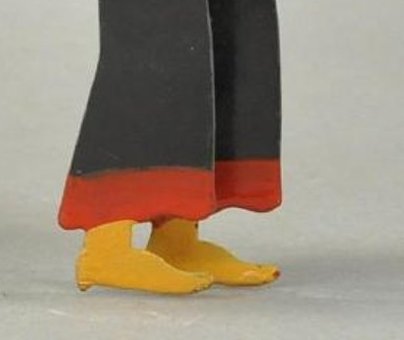
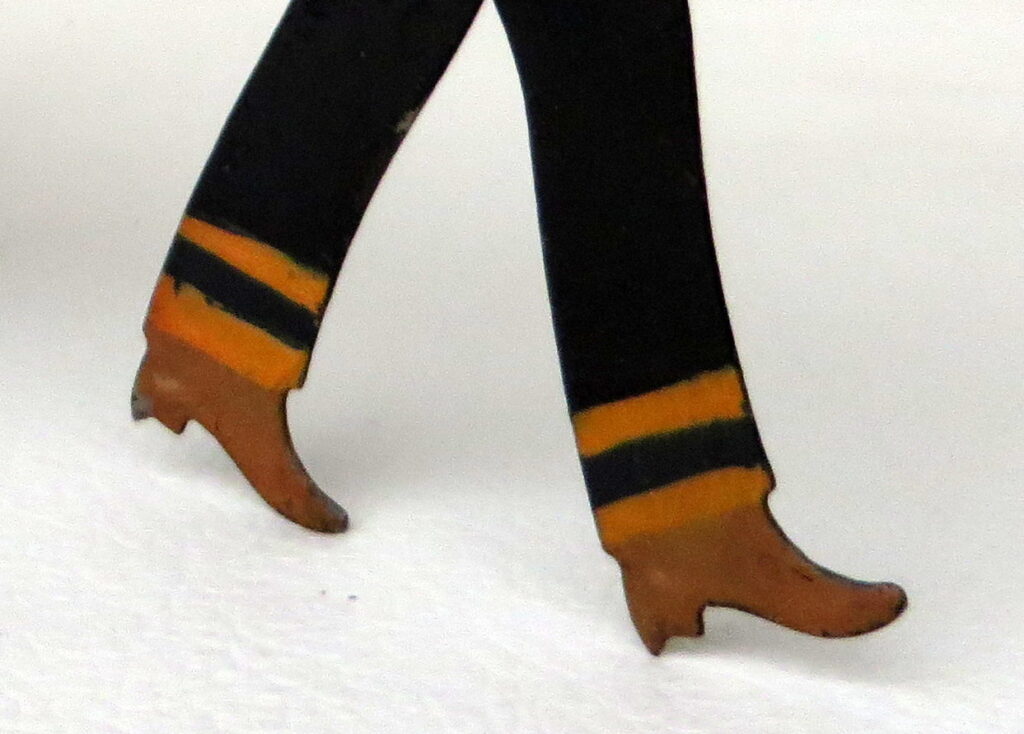
When I bought this model from 1908 it had red accents on the jacket, but on the pants there were yellow/orange stripes, which I thought was strange.
After research the male’s coat appeared to have been completely repainted following the example of the model of the first version 1889, i.e. with the red colors.
I started very carefully removing these overpaints and it turned out that yellow/orange details emerged beneath the red and black paint.
It now appears that it is the same version as the 1908 model, with this one and the model in the museum in Paris, only two are known so far.
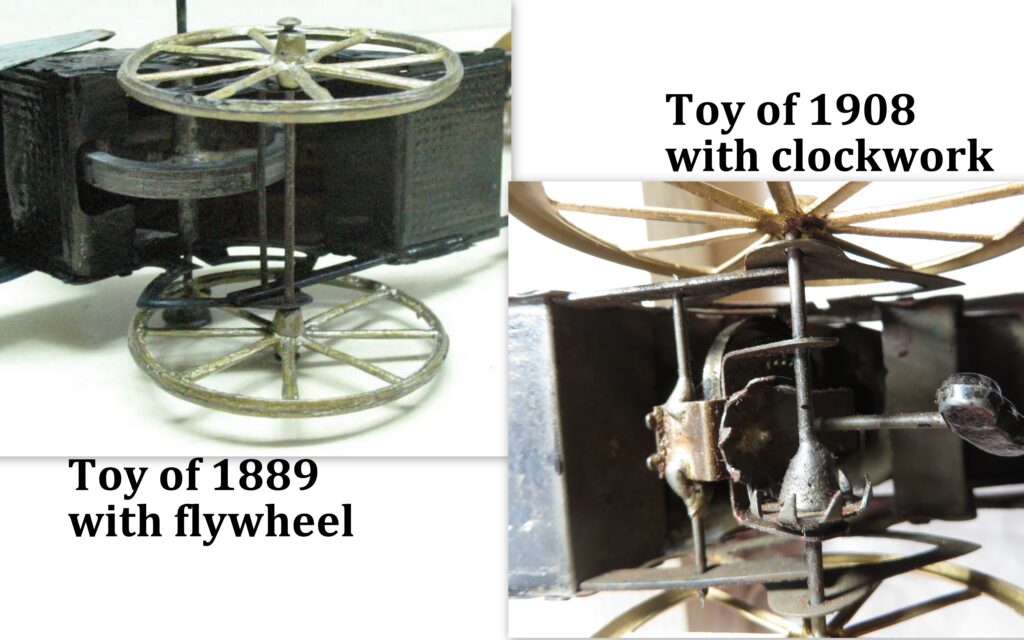
I suspect that a part of Martin’s donation from 1908 was re-produced in 1908 because not all of the toys were anymore in production and/or were no longer available in the factory warehouse, even loose parts and fabrics to make the clothing could be lost over time are no longer in stock.
One of the reasons is that technology continued to develop and new, often better, more modern and/or cheaper production methods were developed, such as the drives and movements of the toys.
With Martin’s toys you first see the Rubber Band driving, then the flywheel and then the clockwork.
Toys were often produced for years, sometimes even decades, but at a certain point production stopped and after the production stop, loose parts were often used for other models or the production molds were adjusted, but that production also stopped over time, so after for many years, many individual parts were no longer in stock.
A large number of the toys intended for donation were still in production or in stock, but the missing pieces were probably made in very small series (the exact number is not known) and how many copies are still in existence today?
And of course these ‘new’ pieces, produced in 1908, may differ from the original.
There are more objects in the museum’s collection that differ from those we know, especially the clothing and colors of some of them often differ.
The previously used fabrics for clothing were probably out of stock or no longer available.
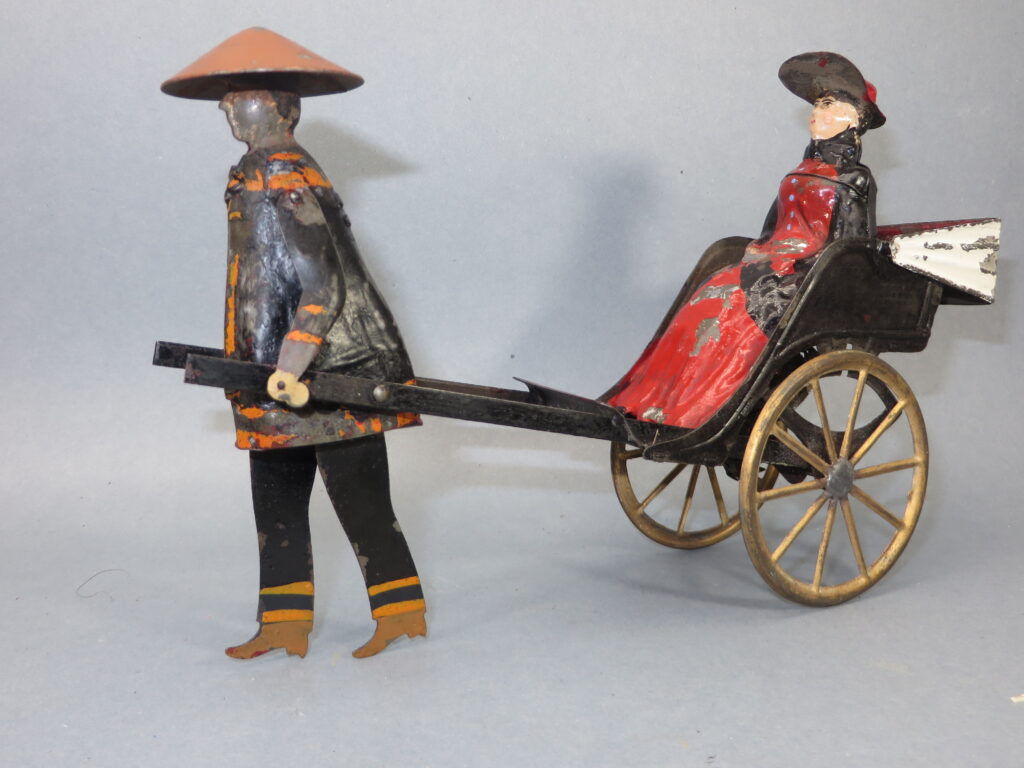

When you want to visit the site of the Musée des arts et Métiers in Paris, then go to:
https://phototheque.arts-et-metiers.net/?idPageWeb=95
and you can see the pictures of the Martin toys collection.
